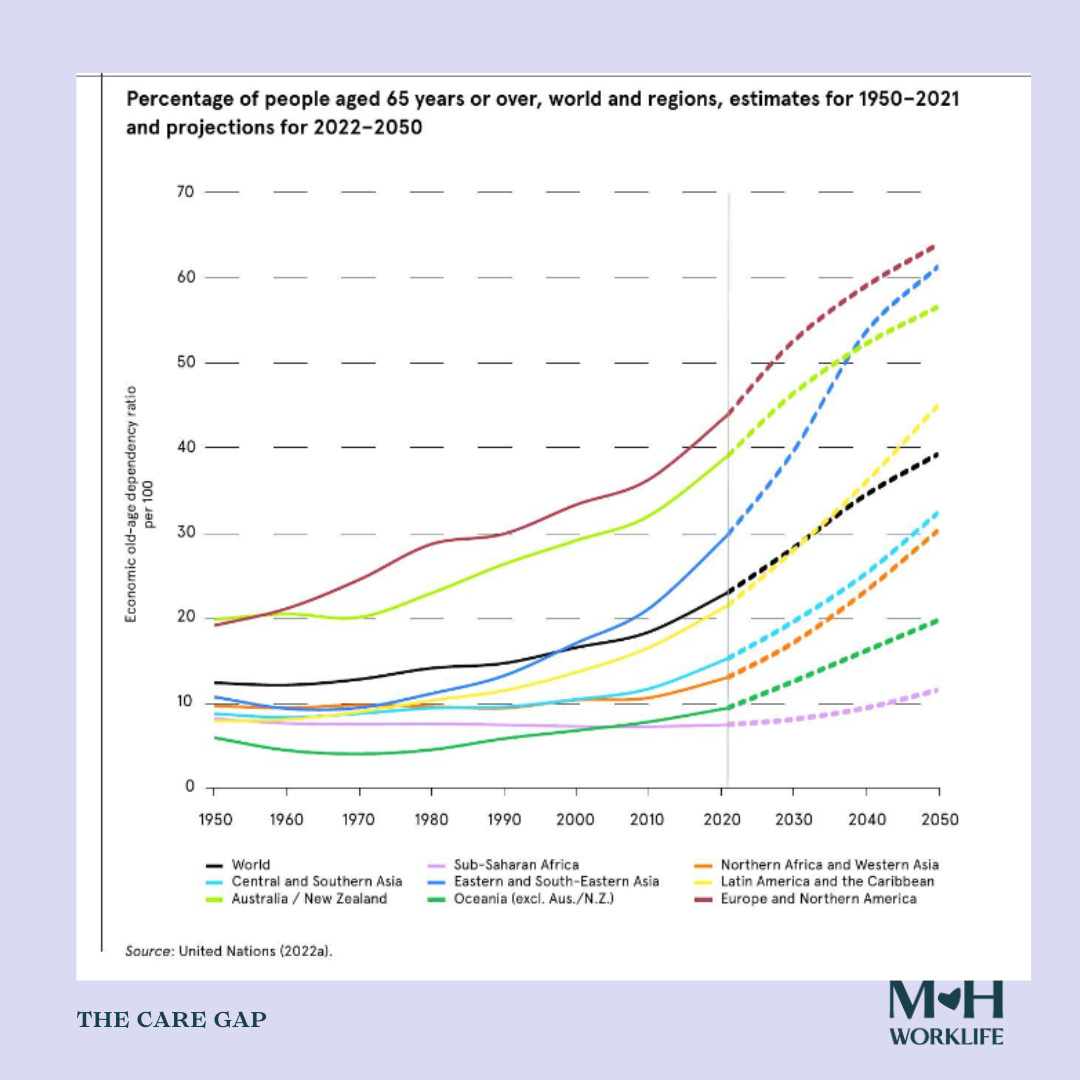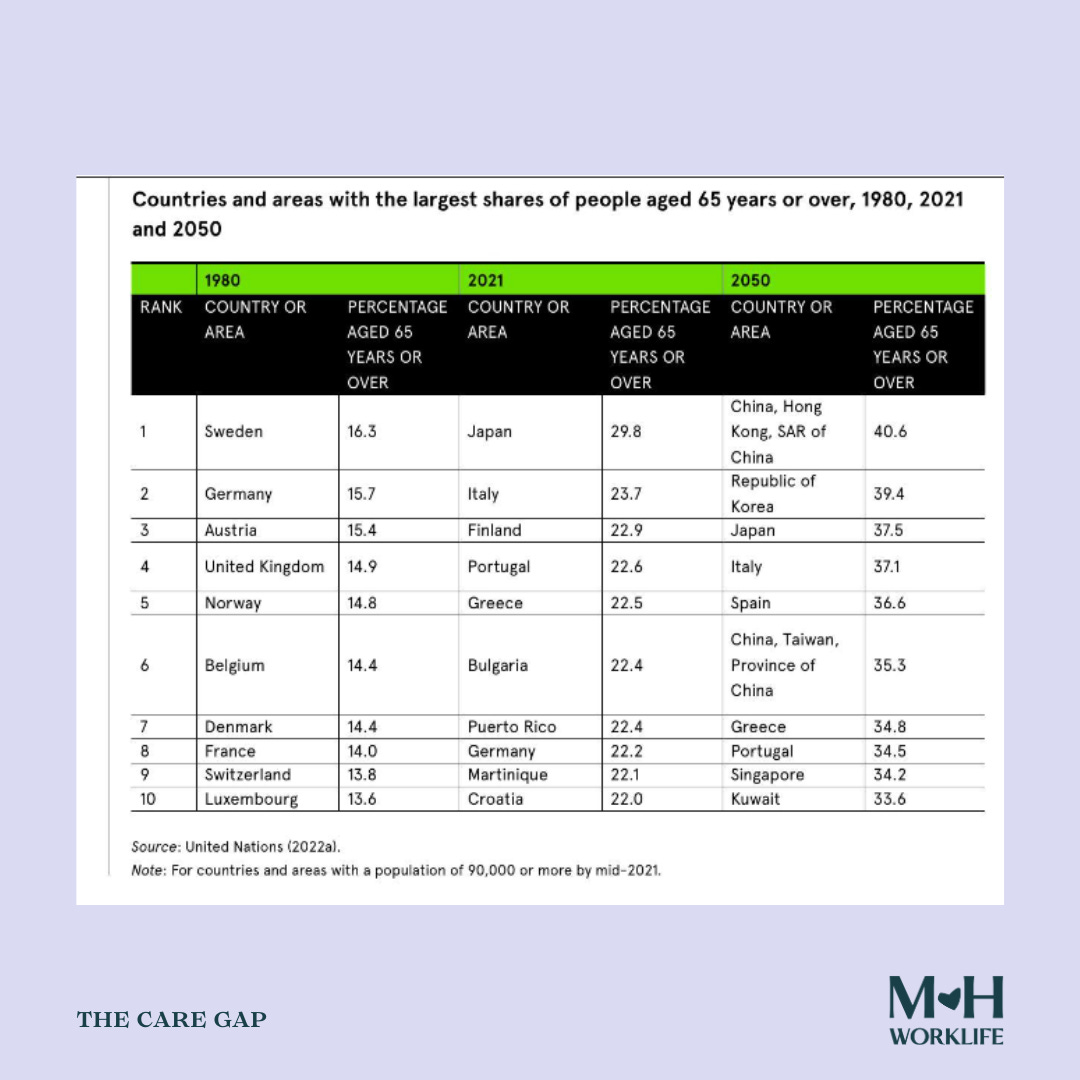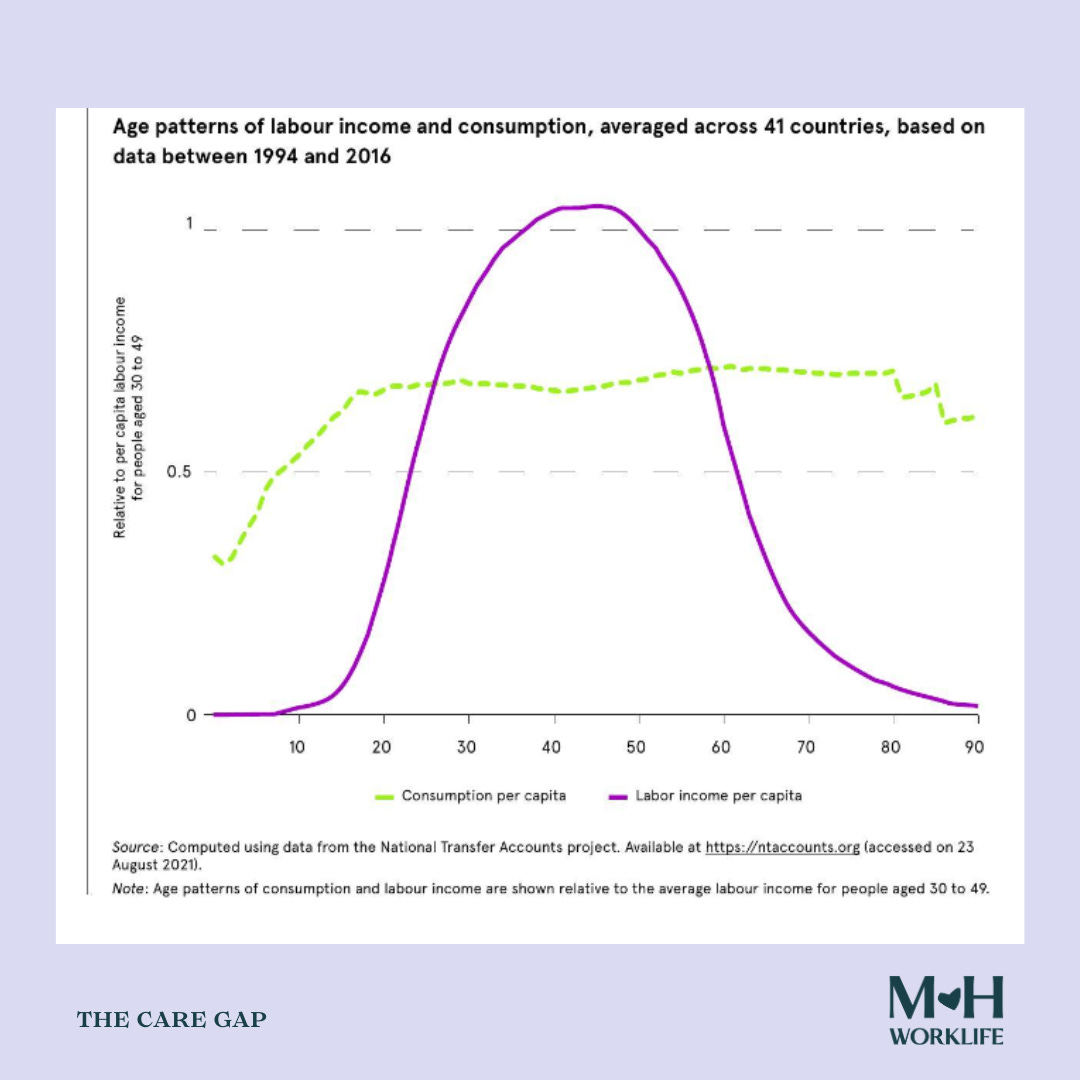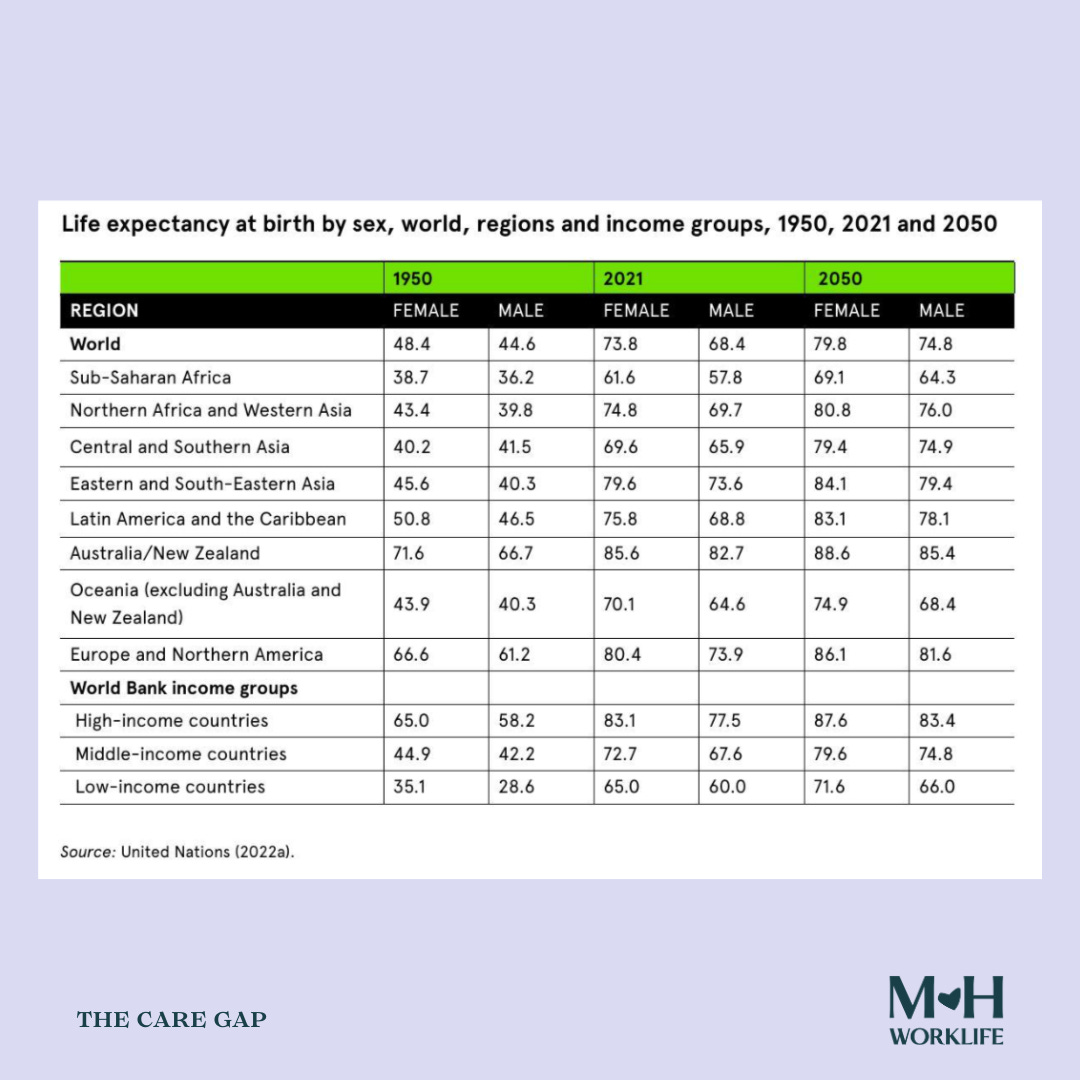Global Aging Is A Woman's Issue
And we can change that by reducing the unpaid labor of women and caregiving stress
Population aging is trending upwards in developing and developed nation. Today most people can expect to live into their sixties and beyond, a welcomed transition towards longer lives and better health outcomes. Every country in the world is experiencing growth in both the size and the proportion of older persons in the population. And its an important trend for us to pay attention to as it presents challenges and opportunities when it comes to caregiving. When we review the data on aging, we find that in 2019, the number of people aged 60 years and older was 1 billion. This number will increase to 1.4 billion by 2030 and 2.1 billion by 2050. This increase is occurring at an unprecedented pace and will accelerate in coming decades, particularly in developing countries. This shift is largely permanent with better health care systems, access to education, family planning, policies, and socio-economic measures around the world.
Currently population aging is furthest along in developed countries such as the Japan, Italy, Finland, Portugal, Greece, Germany, etc. In most of these countries, the percentage of adults over the age of 65 is well over 20% and that number is expected to rise in the coming decades.
Formal Long-Term Care Falls On Women
Population aging brings economic rewards and challenges. As you can imagine, those of us in the middle ages tend to produce more than we can consume which generates surplus for those who depend on us (children, elderly, disabled, ill). While consumption and production pattern change as people age, older people make important economic and social contributions at all stages with many continuing paid employment, assist with financial support and childcare assistance. However, as older persons continue to age, we start to venture into certain territories such as the rising need for health care and long-term care especially in countries where care infrastructures are lacking. And in those situations, women tend to step into care. Women already make up 81% of formal and informal caregivers providing over 75% of caregiving inside and outside of the home. More and more women will have to provide care further widening the gender gap.
Informal Long-Term Care Falls On Women
Demand for long-term care is increasing in many countries. Co-habiting family members, usually unpaid women women and girls provide care for aging adults. This inter-generational care is declining in both developed and developing countries, and public funding for aging care has been insufficient in covering the growing demand of long-term care.
Men Live Fewer Years Than Women, Yet Women Experience Prevalence of morbidity and disability
Women have a survival advantage. Global life expectancy at birth is projected to increase further for both women and men, reaching over 80 years for women and 75 years for men by 2050. However, longer life span for women are not always healthy. A recent analysis of selected countries in Asia, Western Europe, and Northern America found that increased life expectancy in recent decades was accompanied by a proportional increase in disabilities.
And this is where it becomes concerning. Why are women living longer but living in pain and long suffering? Is there any correlation between the years of caregiving stress and women living longer but with higher co-morbidities than men? According to another OECD report, women often experience higher rates of chronic conditions, arthritis, osteoporosis, and depression which may be debilitating and diminishes the quality of life but are less likely to result in death (Carmel 2019, OECD) which is contrasting to men who often suffer from cardiovascular diseases, cancer, and other lifestyle risks such as exposure to tobacco and excessive alcohol.
What does this tell us, that we can change the longevity trajectory of women by probably changing conditions early in life, conditions that are conducive to a higher mental, physical, and emotional wellbeing and that likely includes reducing the unpaid labor of women and caregiving stress.
Global Care Memo
Women’s Household Work May Be Added to US Surveys
Poll to include metric that quantifies child care, home duties. Women provide nearly 80% of household services, study finds.
Cash for Nannies, Extra Days Off: Child-Care Perks Top Workplace Benefits
More than half of US companies said they are prioritizing child-care benefits in 2024
Whatever Happened to All Those Care Robots?
So far, companion robots haven’t lived up to the hype—and might even exacerbate the problems they’re meant to solve.
Will America’s Care Crisis Take Center Stage In The 2024 Elections?
With the presidential election year fully underway, we’ve already heard so much about what will likely be defining issues for voters. But will we hear much about care? With 10,000 baby boomers turning 65 every day facing an underfunded elder care system, and a child care industry in dire collapse, our weak care infrastructure touches the lives of millions of voters in highly personal ways every day.
From the economy to the climate crisis: key issues in the 2024 US election
As a Joe Biden v Donald Trump election rematch looms, much is at stake. From the future of reproductive rights to the chances of meaningful action on climate change, from the strength of US support for Ukraine in its war with Russia to the fate of democracy in America itself, existential issues are set to come to the fore.
The Care Gap is written by Blessing Adesiyan, Founder & CEO of MH WorkLife and Executive Director, Caring Africa where she is on a mission to close the care gap for women, workplaces, and economies. Follow @blessing.adesiyan @mhworklife @caringafrica for more.







